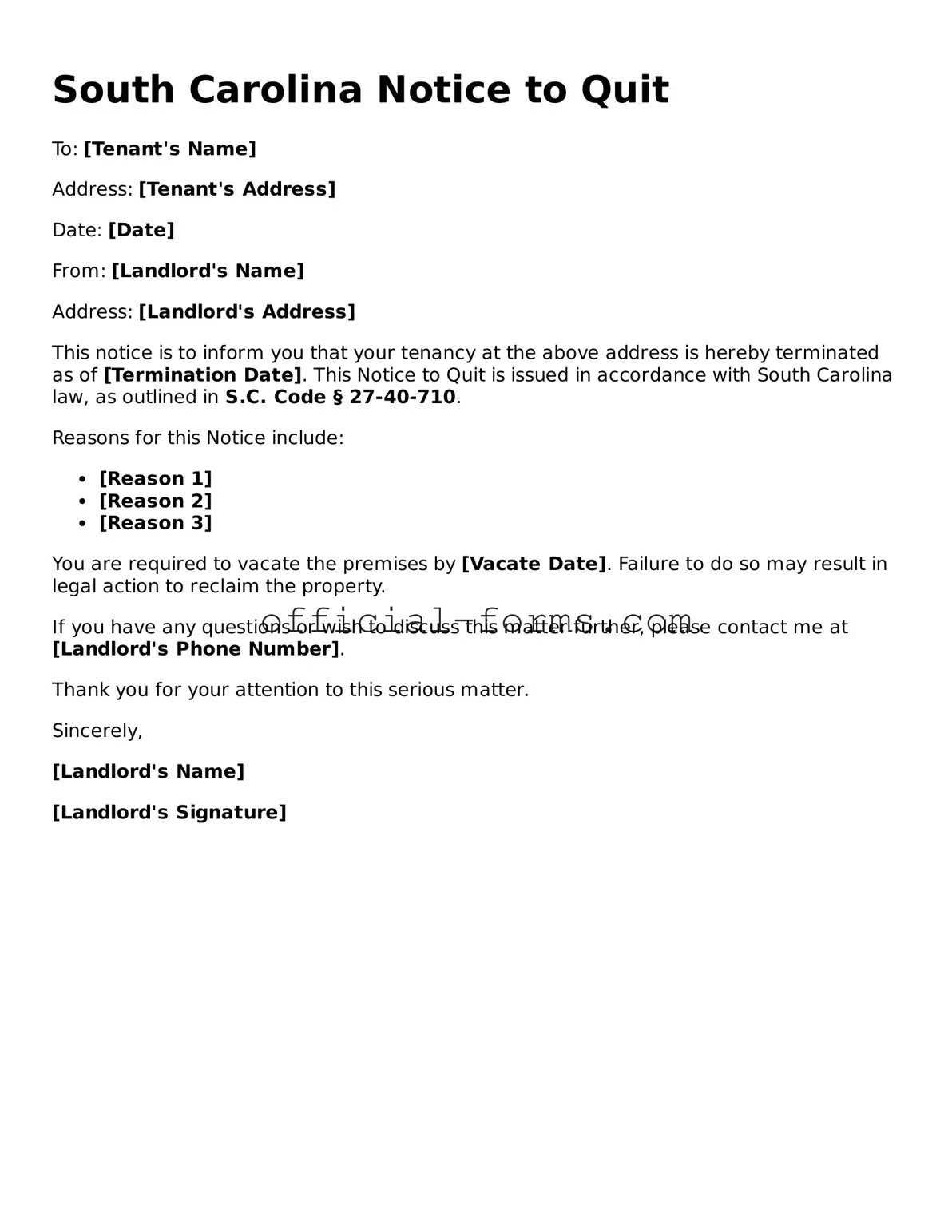Official South Carolina Notice to Quit Document
The South Carolina Notice to Quit form is a legal document that a landlord uses to inform a tenant of their need to vacate the rental property. This form serves as a crucial step in the eviction process, providing the tenant with a formal notice of their lease violation or failure to pay rent. Understanding this form is essential for both landlords and tenants to ensure compliance with state laws and to protect their rights.
Open My Notice to Quit Now
